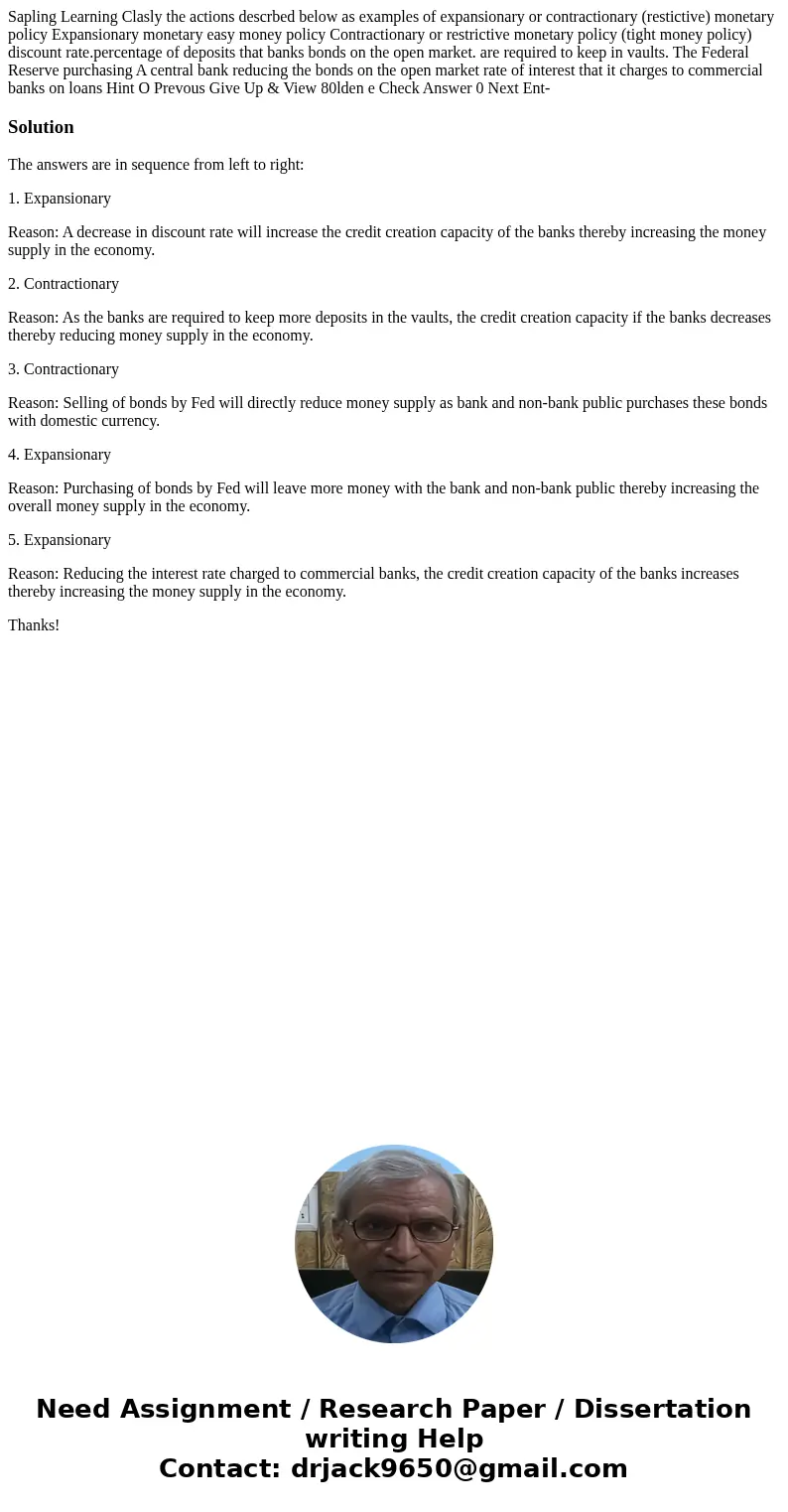Sapling Learning Clasly the actions descrbed below as exampl
Solution
The answers are in sequence from left to right:
1. Expansionary
Reason: A decrease in discount rate will increase the credit creation capacity of the banks thereby increasing the money supply in the economy.
2. Contractionary
Reason: As the banks are required to keep more deposits in the vaults, the credit creation capacity if the banks decreases thereby reducing money supply in the economy.
3. Contractionary
Reason: Selling of bonds by Fed will directly reduce money supply as bank and non-bank public purchases these bonds with domestic currency.
4. Expansionary
Reason: Purchasing of bonds by Fed will leave more money with the bank and non-bank public thereby increasing the overall money supply in the economy.
5. Expansionary
Reason: Reducing the interest rate charged to commercial banks, the credit creation capacity of the banks increases thereby increasing the money supply in the economy.
Thanks!

 Homework Sourse
Homework Sourse